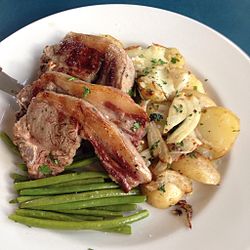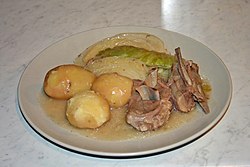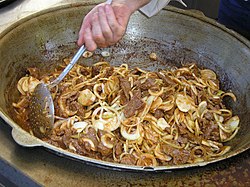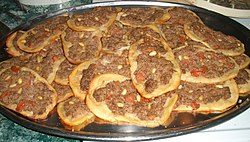
This is a list of the popular lamb and mutton dishes and foods worldwide. Lamb and mutton are terms for the meat of domestic sheep (species Ovis aries ) at different ages. A sheep in its first year is called a lamb, and its meat is also called lamb. The meat of a juvenile sheep older than one year is hogget; outside North America this is also a term for the living animal. [1] The meat of an adult sheep is mutton, a term only used for the meat, not the living animal.
Contents
Meat from sheep features prominently in several cuisines of the Mediterranean. Lamb and mutton are very popular in Central Asia and in India, where other red meats may be eschewed for religious or economic reasons. It is also very popular in Australia. Barbecued mutton is also a specialty in some areas of the United States (chiefly Owensboro, Kentucky) and Canada.


















